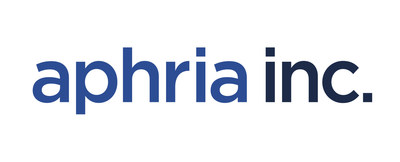Acceleron Presents New Data from the PULSAR Phase 2 Trial, Preclinical Research on Sotatercept in Pulmonary Arterial Hypertension (PAH) at the 2020 American Heart Association (AHA) Scientific Sessions
– Treatment with sotatercept in the ongoing PULSAR Phase 2 trial was associated with improvements in cardiac and pulmonary function at week 24 –
– Presentation of echocardiography data from the PULSAR trial received AHA’s “Cardiopulmonary Best Abstract” Award –
– Preclinical research shows sotatercept inhibits cardiac remodeling, restores function in experimental model of severe PAH –
– Acceleron to host investor and analyst conference call and webcast with guest PAH key opinion leaders today, Friday, November 13, at 11:00 a.m. EST –
CAMBRIDGE, Mass.–(BUSINESS WIRE)–
Acceleron Pharma Inc. (Nasdaq: XLRN), a leading biopharmaceutical company in the discovery, development, and commercialization of TGF-beta superfamily therapeutics to treat serious and rare diseases, today presented new cardiac and pulmonary function data from the ongoing PULSAR Phase 2 trial of sotatercept in patients with pulmonary arterial hypertension (PAH).
Echocardiography data obtained during the PULSAR trial and presented virtually during the American Heart Association (AHA) 2020 Scientific Sessions showed that patients on stable background PAH-specific therapies treated with sotatercept experienced improvement in a measure of cardiopulmonary function known as right ventricular-pulmonary arterial (RV-PA) coupling, which represents the match between the output of the RV and the resistance of the pulmonary vasculature. These patients also experienced improvement in RV function. In patients with PAH, RV function deteriorates as a result of the pulmonary vascular remodeling that is a hallmark of the disease.
“Progression of PAH may lead to RV failure, which is ultimately fatal in patients with this disease,” said Dr. Vallerie McLaughlin*, Professor of Medicine and Director of the Pulmonary Hypertension Program at the University of Michigan. McLaughlin’s presentation today of the PULSAR echocardiography data received AHA’s “Cardiopulmonary Best Abstract” award.
“The measurement of RV-PA coupling may offer important insights into how the RV is coping with increased pulmonary pressure. Although the assessment of RV-PA coupling noninvasively is a relatively new approach, these data are encouraging, as they demonstrate potential for RV remodeling,” McLaughlin continued. “Taken together with previously reported results of sotatercept’s hemodynamic and functional improvements—as measured by reduced pulmonary vascular resistance and increased six-minute walk distance—these outcomes suggest that sotatercept has the potential to become a paradigm-shifting new treatment option for patients with PAH.”
In the PULSAR Phase 2 double-blind, placebo-controlled study, 106 patients were randomized to receive placebo, 0.3 mg/kg of sotatercept, or 0.7 mg/kg of sotatercept subcutaneously every 21 days in combination with stable background PAH-specific therapies over a 24-week treatment period. The echocardiography results presented are from 94 patients and additional data analyses are ongoing. In addition to RV-PA coupling (measured in 51 patients) and RV function, patients treated with sotatercept experienced improvements in a number of other cardiopulmonary measures, including pulmonary artery systolic pressure and right ventricular fractional area change.
Sotatercept was generally well tolerated in the trial. Adverse events observed in the study were generally consistent with previously published data on sotatercept in other diseases.
“As we seek to deliver a much-needed, transformative therapy to patients with this debilitating disease, we are increasingly encouraged by a growing body of clinical and preclinical evidence that sotatercept does indeed have such potential,” said Habib Dable, President and Chief Executive Officer of Acceleron, who also referenced a preclinical research presentation at AHA showing that a murine version of sotatercept prevented RV remodeling and restored RV function in an animal model of severe disease.
“We look forward to confirming this early success with sotatercept in PAH in a comprehensive Phase 3 clinical development program, beginning with the registrational STELLAR trial, which we expect to initiate before the end of this year,” Dable added.
Sotatercept is an investigational therapy that is not approved for any use in any country.
The presentations referenced above are available on the “Publications” page under the “Science & Pipeline” section of Acceleron’s website, www.acceleronpharma.com.
*Dr. McLaughlin is an investigator in the PULSAR trial and a paid consultant to Acceleron.
About the PULSAR Trial
The PULSAR Phase 2 trial is a randomized, double-blind, placebo-controlled study designed to evaluate the efficacy and safety of sotatercept in PAH patients. The primary endpoint of the trial is the change from baseline in pulmonary vascular resistance (PVR) over a 24-week treatment period. PVR, as measured by right heart catheterization, is the resistance that the heart must overcome to pump blood through the pulmonary circulatory system. The key secondary endpoint was six-minute walk distance (6MWD); a measure of functional capacity/endurance. Other exploratory analyses included change in amino-terminal brain natriuretic propeptide (NT-proBNP), a hormone secreted by cardiac muscle cells in response to stretching caused by increased blood volume in the heart; mean pulmonary arterial pressure, a hemodynamic measure of average pressure in the main pulmonary arteries, which is elevated in PAH patients; and WHO functional class. A total of 106 patients were randomized in a 3:3:4 ratio to receive placebo, sotatercept 0.3 mg/kg, or sotatercept 0.7 mg/kg subcutaneously every 21 days with standard-of-care therapies in combination.
Following the 6-month double-blind treatment period, participants in the trial were eligible to continue in the 18-month extension period.
As of October 28, 2020, 93 of 97 patients who opted to participate in the 18-month extension period of the trial were still enrolled; 94 patients have now been treated with sotatercept for at least 12 months.
Conference Call and Webcast Information
The Company will host a webcast and conference call today, November 13, 2020, at 11:00 a.m. EST, to review the presentations of sotatercept at AHA.
The webcast will be accessible under “Events & Presentations” in the Investors/Media page of the company’s website at www.acceleronpharma.com. Individuals can participate in the live conference call by dialing 877-312-5848 (domestic) or 253-237-1155 (international) and referring to the “AHA Sotatercept Conference Call.”
A replay of the webcast will be available on the Acceleron website approximately two hours after the event.
About Sotatercept
Sotatercept is an investigational reverse-remodeling agent designed to be a selective ligand trap for members of the TGF-beta superfamily to rebalance BMPR-II signaling, which is a key molecular driver of PAH. The PULSAR Phase 2 trial evaluating sotatercept in combination with approved PAH-specific medicines in patients with PAH achieved its primary endpoint of improvement in pulmonary vascular resistance and its key secondary endpoint of improvement in 6-minute walk distance. Sotatercept was generally well tolerated in the trial. Adverse events observed in the study were generally consistent with previously published data on sotatercept in other diseases. Following the PULSAR results, sotatercept was granted Breakthrough Therapy designation from the FDA and Priority Medicines designation from the EMA in PAH. Sotatercept is also being evaluated in the SPECTRA Phase 2 exploratory trial.
In preclinical research published in Science Translational Medicine, sotatercept exhibited consistent effects across multiple components of disease, including suppressed proliferation of pulmonary arterial smooth muscle and microvascular endothelial cells, reduced pulmonary pressures, lessened right ventricular hypertrophy, improved right ventricular function, and attenuated vascular remodeling.
The Company recently presented details of its Phase 3 development plan, including the design for the registrational STELLAR trial, which is expected to be initiated before the end of 2020. Acceleron is planning two additional Phase 3 studies in patients with PAH: the HYPERION trial, exploring early intervention with sotatercept, and the ZENITH trial assessing later-stage intervention.
Sotatercept is an investigational therapy that is not approved for any use in any country. Sotatercept is part of a licensing agreement with Bristol Myers Squibb.
About PAH
PAH is a rare and chronic, rapidly progressing disorder characterized by the constriction of small pulmonary arteries and elevated blood pressure in the pulmonary circulation. PAH results in significant strain on the heart, often leading to limited physical activity, heart failure, and reduced life expectancy. The 5-year survival rate for patients with PAH is approximately 57%. Available therapies generally act by promoting the dilation of pulmonary vessels without addressing the underlying cause of the disease. As a result, PAH often progresses rapidly for many patients despite standard of care treatment. A growing body of research has implicated imbalances in BMP and TGF-beta signaling as a primary driver of PAH in familial, idiopathic, and acquired forms of the disease.
About Acceleron
Acceleron is a biopharmaceutical company dedicated to the discovery, development, and commercialization of therapeutics to treat serious and rare diseases. Acceleron’s leadership in the understanding of TGF-beta superfamily biology and protein engineering generates innovative compounds that engage the body’s ability to regulate cellular growth and repair.
Acceleron focuses its commercialization, research, and development efforts in hematologic and pulmonary diseases. In hematology, REBLOZYL® (luspatercept-aamt) is the first and only erythroid maturation agent approved in the United States, Europe, and Canada for the treatment of anemia in certain blood disorders. REBLOZYL is part of a global collaboration partnership with Bristol Myers Squibb. The Companies co-promote REBLOZYL in the United States and are also developing luspatercept for the treatment of anemia in patient populations of MDS, beta-thalassemia, and myelofibrosis. In pulmonary, Acceleron is developing sotatercept for the treatment of pulmonary arterial hypertension (PAH), having recently presented positive topline results of the PULSAR Phase 2 trial. The Company is currently planning multiple Phase 3 trials with the potential to support its long-term vision of establishing sotatercept as a backbone therapy for patients with PAH at all stages of the disease.
For more information, please visit www.acceleronpharma.com. Follow Acceleron on Social Media: @AcceleronPharma and LinkedIn.
Forward-Looking Statements
This press release contains forward-looking statements about Acceleron’s strategy, future plans and prospects, including statements regarding the development of sotatercept in PAH, the timeline for clinical development and regulatory approval of sotatercept in PAH, the expected timing for reporting of data from ongoing clinical trials, and the potential of Acceleron’s compounds as therapeutic drugs. The words “anticipate,” “believe,” “could,” “estimate,” “expect,” “goal,” “intend,” “may,” “plan,” “possible,” “potential,” “project,” “should,” “target,” “will,” “would,” and similar expressions are intended to identify forward-looking statements, although not all forward-looking statements contain these identifying words.
Actual results could differ materially from those included in the forward-looking statements due to various factors, risks and uncertainties, including, but not limited to, that preclinical testing of Acceleron’s compounds and data from clinical trials may not be predictive of the results or success of ongoing or later clinical trials, that regulatory approval of Acceleron’s compounds in one indication or country may not be predictive of approval in another indication or country, that the development of Acceleron’s compounds will take longer and/or cost more than planned, that Acceleron will be unable to successfully complete the clinical development of Acceleron’s compounds, that Acceleron may be delayed in initiating, enrolling or completing any clinical trials, that Acceleron’s compounds will not receive regulatory approval or become commercially successful products, and that Breakthrough Therapy or PRIME designation may not expedite the development or review of sotatercept. These and other risks and uncertainties are identified under the heading “Risk Factors” included in Acceleron’s most recent Annual Report on Form 10-K, Quarterly Report on Form 10-Q, and other filings that Acceleron has made and may make with the SEC in the future.
The forward-looking statements contained in this press release are based on management’s current views, plans, estimates, assumptions, and projections with respect to future events, and Acceleron does not undertake and specifically disclaims any obligation to update any forward-looking statements.

View source version on businesswire.com: https://www.businesswire.com/news/home/20201113005115/en/
Investors:
Jamie Bernard, IRC, 617-649-9650
Associate Director, Investor Relations
Media:
Matt Fearer, 617-301-9557
Director, Corporate Communications
KEYWORDS: Massachusetts United States North America
INDUSTRY KEYWORDS: Biotechnology General Health Health Pharmaceutical Clinical Trials
MEDIA:
| Logo |
 |
|
![]() View original content to download multimedia:http://www.prnewswire.com/news-releases/aphria-inc-to-present-at-the-jefferies-virtual-london-healthcare-conference-301172808.html
View original content to download multimedia:http://www.prnewswire.com/news-releases/aphria-inc-to-present-at-the-jefferies-virtual-london-healthcare-conference-301172808.html








